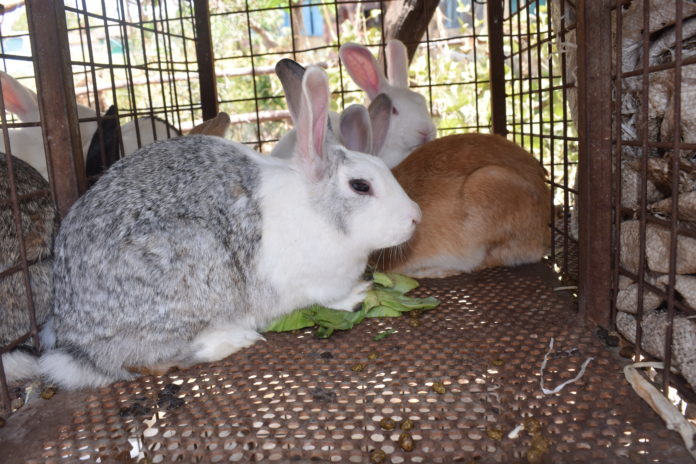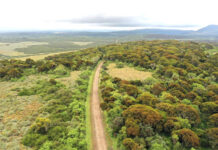By Rahab Gakuru
Nairobi, Kenya: Kiroko Urban Farm is strictly an organic farm. Started in Bahati Estate along Jogoo Road, Nairobi as a rabbit farm in 2002 with only two rabbits, now has a spice & vegetable garden, chicken, goats, guinea pigs, and a training forum.
George Mugo Wachira reminisced about how the farm started. “To us rabbits were pets. However, after visiting a friend my dad brought back home a rabbit and some spices to cook the rabbit. He put in a lot of celery. My neighbors complained a lot because of the smell, houses here are close and small. But it was very sumptuous. Shortly after he visited the then Embakasi MP and upon seeing his rabbit farm, he changed his perspective on rabbits. Rabbit farming would become his new business,” he narrates.
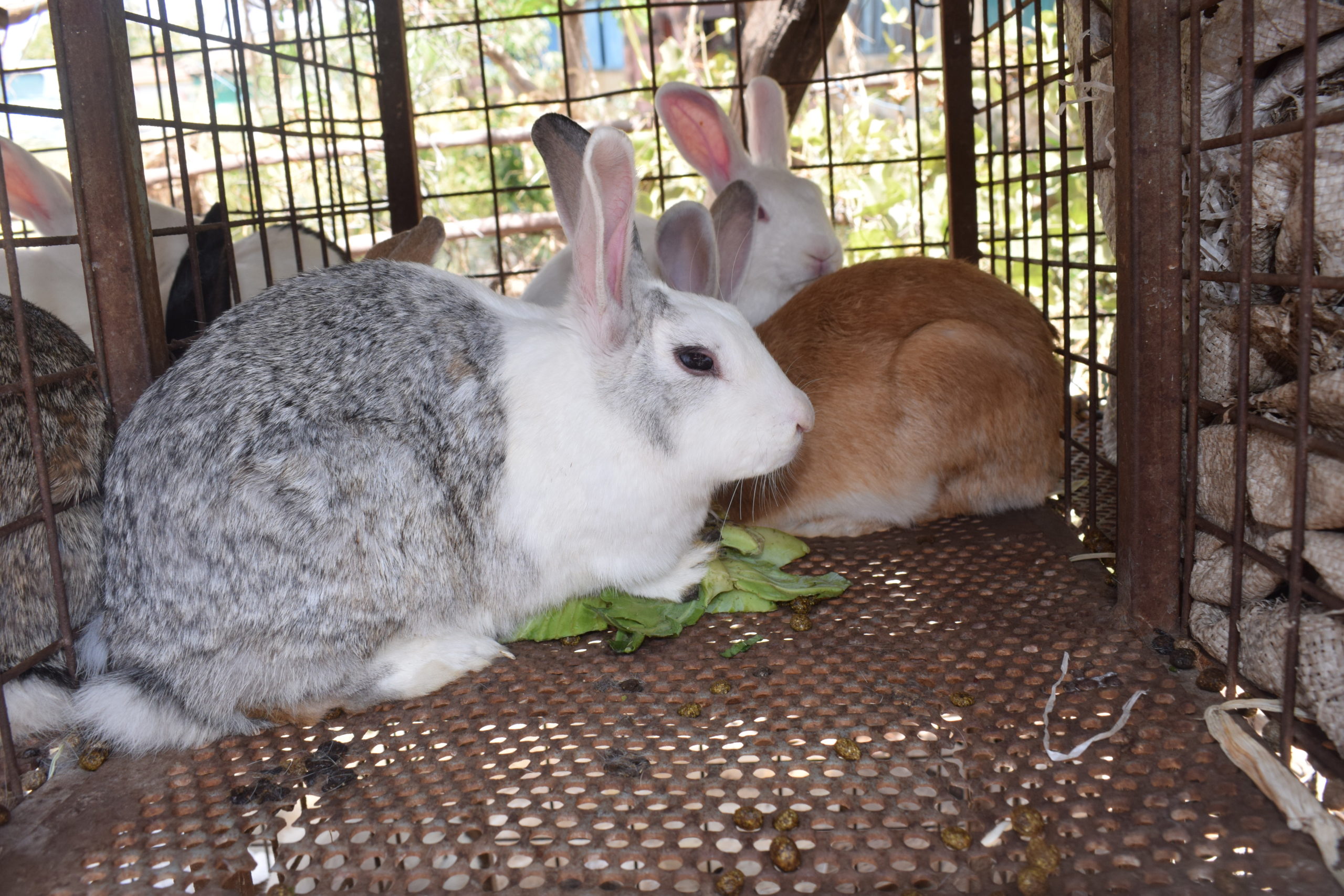
Wachira, a graduate from The University of Nairobi with a Bachelor in Education now helps his old father run the Kiroko Urban Farm. According to Wachira, his late mother used to help his father run the farm. “My siblings and I thought this was a hobby. But our father would extensively research sustainable organic urban farming and with an empty plot sitting right outside our house, he started rearing chickens and goats. Soon after, he was also farming spices like celery, mint, coriander, and vegetables.” He says.
A partnership with the Mazingira Institute, a non-governmental organization that offers support for urban farming, ensured the farm was running efficiently. “When we started, my father would constantly get harassed by the city council officials. The city council bylaws at the time had little or no stipulations that offered guidance to the urban farmers.” He says.
The partnership with Mazingira Institute brought schools and farmers to Kiroko Urban farm to learn. “Eventually also the local authorities’ extension agriculture programs started to send their officers to the farm to learn. This helped them overcome their initial teething problems,” Wachira adds.
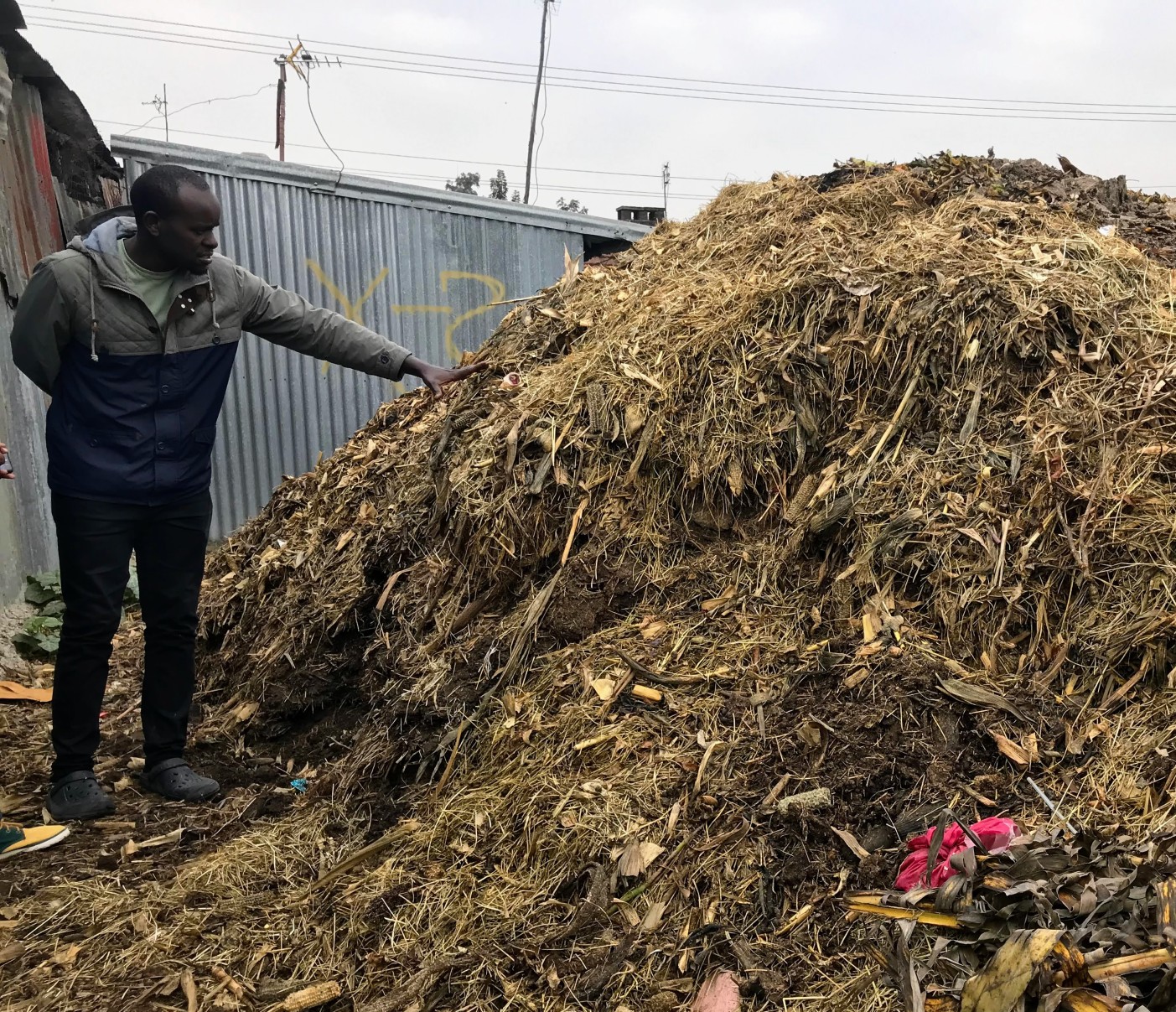
Now, the farm has a variety of crops, ranging from herbs to tubers, vegetables, as well as cereals like spinach, kales, carrots, onions, tomatoes, chilies, coriander(dhania), spider plant(sageti), cowpeas leaves(Kunde), pigweed(terere), chlotolaria(mito), mrenda, beetroot, radish, arrowroots, yams, sorghum, maize, sunflower, lemongrass, mint, dill, celery, as well as fodder such as bracharria for their livestock.
The farm gets their soil from constructing companies who are looking for a place to dump their soil. George says their farm has black cotton soil that is poor for farming due to its poor drainage. Their crops are alternated in the small plots, which has helped in controlling the pests and diseases as well as adding to the fertility of the soil.
“The pests that attack one type of crop cannot attack the other type so they will not be spreading across the farm. Plants in the legume family also aid in adding nutrients such as nitrogen to the soil that could be used by other plants as well.” He says.
The farm has employed practices such as mulching that help in weeding as well as water retention in the soils. They are also keen to only use organic products on their crops. Wachira says they collect green waste to make organic fertilizer.
Every day they collect vegetable and fruit waste from Uhuru market, searching through it for the rabbits, chickens, and goats food. The waste that cannot be fed to the animals, makes organic manure, which they sell for Ksh 1,000 per bag. “We also use urine from the rabbits to make organic fertilizer and pesticides. My father is committed to ensuring no chemicals are used in our farm.”
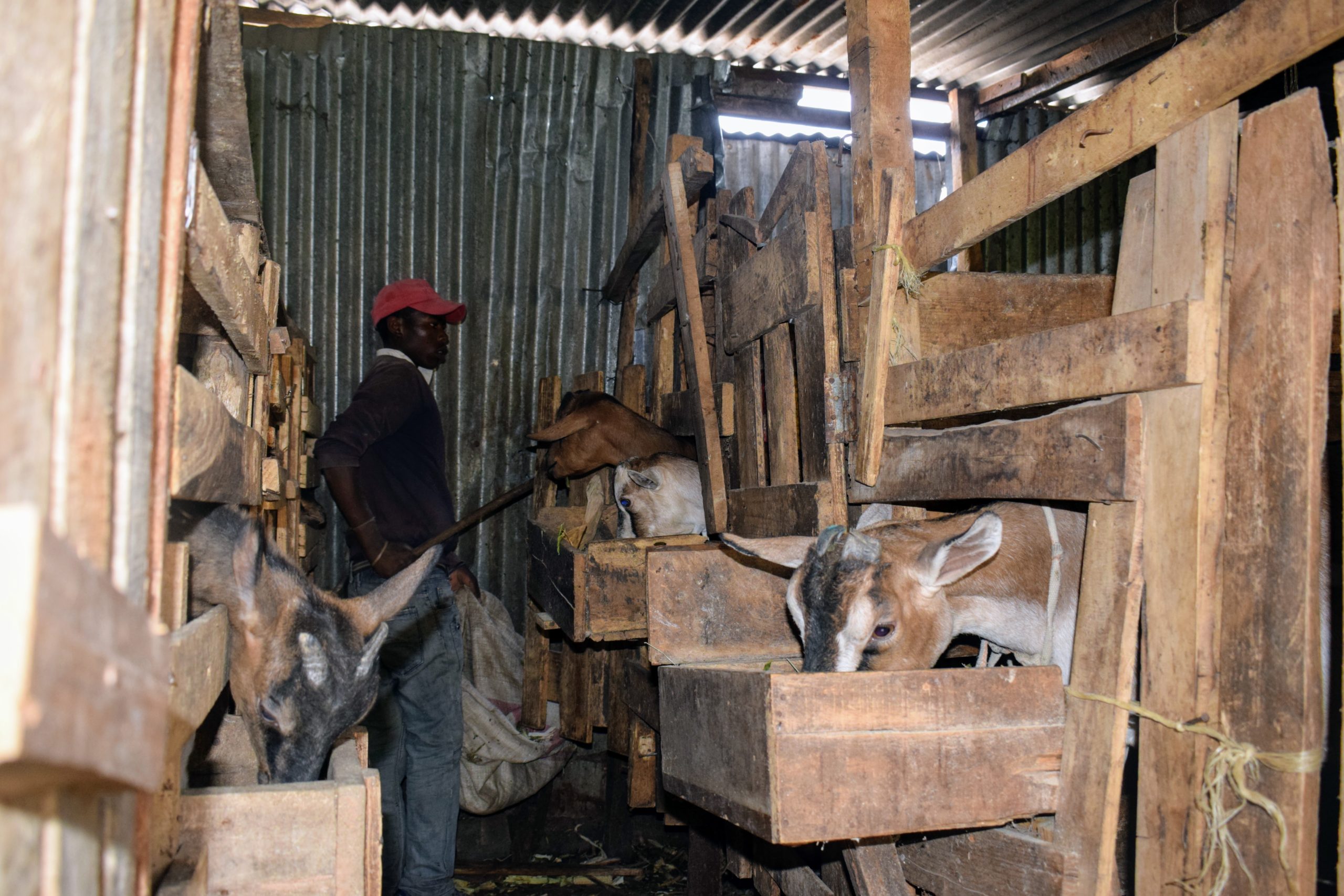
Organic farming is a form of agroecology. According to Dr. Martin Oulu, PhD., ISFAA Coordinator and Lecturer, University of Nairobi, agroecology has been proven to increase the yields of small-scale farmers, enhance their soils, improve their health because they can eat a variety of healthy (no chemical) foods from their gardens. “Agroecology also reduces the cost of agricultural production because the farmers don’t have to spend money on expensive inputs such as fertilizers, pesticides, etc. since they’re using compost or farmyard manure from their farms, as well as practicing integrated pest management (IPM).” He adds.
According to a 2020 report by Alliance for Food Sovereignty in Africa (AFSA), since 2006, the Organic Agriculture Centre of Kenya (OACK) has been working with farmers in Kangari village in Murang’a county, Kenya that practiced mono-cropping for many years equipping them with agroecology and organic farming practices.
With nearly 80% of the land on tea crops, which are planted purely for income. In his two acres of land, Samuel has dedicated 75% to tea farming. On the rest, he carries other crops and some cattle, and a beehive. His use of strong pesticides impacts the soil negatively as well as burdens him financially. Through OACK a project that assisted over 16,000, Samuel has adopted organic farming that increased his leaf harvest to 40%.
Currently, the farm holds about 100 rabbits of different breeds California White, Flemish Giant, Dutch breed, and a crossbreed of the Dutch breed, and a New Zealand White. “We mainly slaughter the male because we need the female one for breeding. We deliver to Triple O’s Hotel and Meat Experience. At the moment the farm is still unable to meet the demand.” George says, “Weekly we get up to 30kg of orders from one client. We sell 1 kg at Ksh 700. We also work with different farmers from Nakuru, Naro Moru, Nyeri, and Kitale to try and cover the gaps in the market. There is still a long way to go. We are still looking for a market for rabbit skin.”
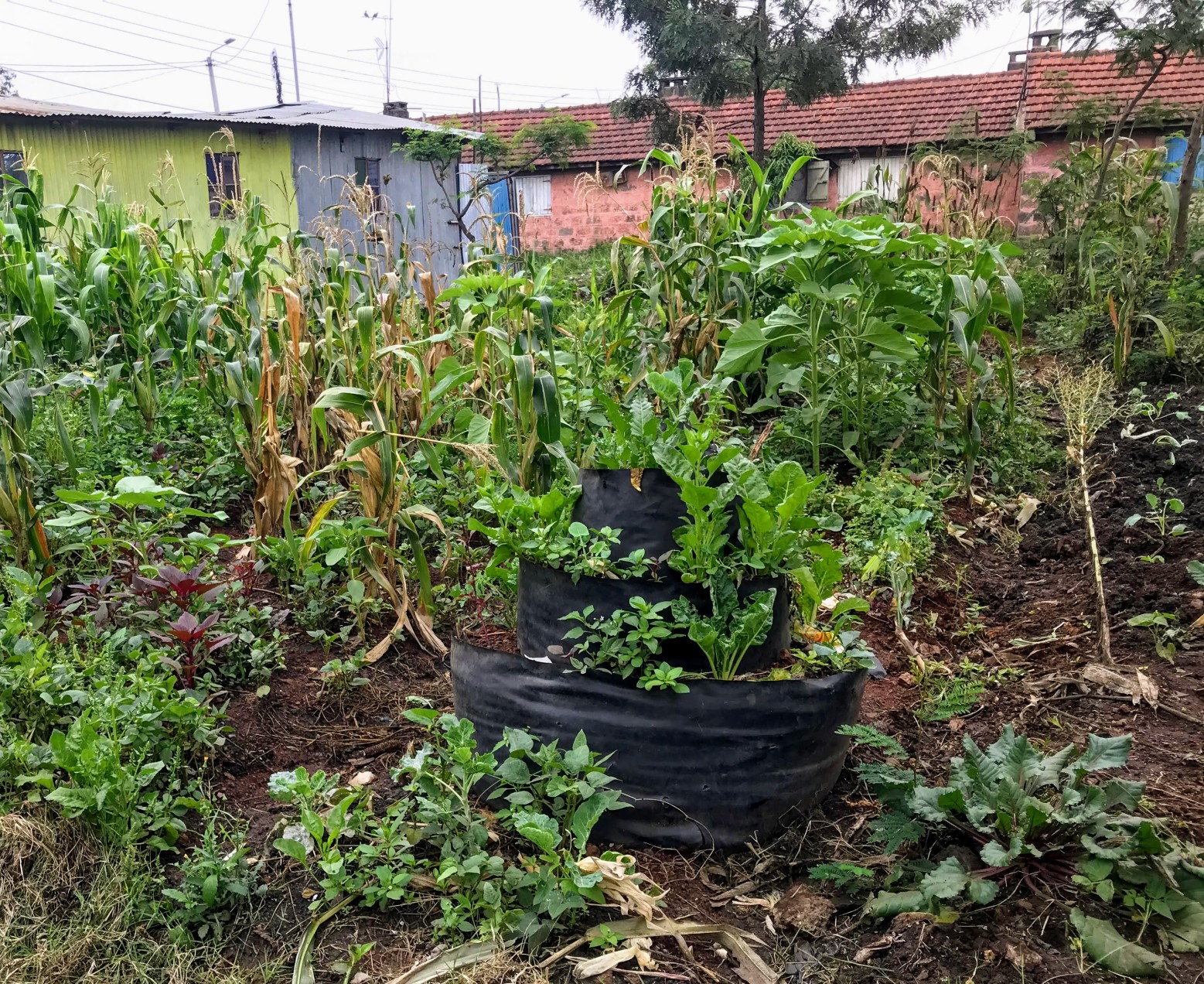
Kiroko Urban farm dairy goats are their main consistent source of income. The goats produce 1-3 liters of milk daily. A liter of goat milk is sold at Ksh 200. “Goats milk is thicker than cow’s milk. It is highly nutritious, especially owing to the fact that it has a high content of calcium. Most of our customers are children and recommendations for medical grounds,” Wachira notes.
In the five-roomed iron sheet structure, the farm keeps the German Alpine breed and the Toggenburg breed. The goats are fed the dairy meal that is needed to boost milk production. According to George, they also have the kienyeji (local) chickens, which are mainly kept for eggs. “Although the livestock gives us a higher return than the crops. Each venture complements the other. When some goats have decreased production, sales from the surplus crops can cover up for losses that may result from the low milk production, “he says. The farm makes sales of about Ksh 50,000 every month from animal products, that is milk, eggs, and meat.
For three months, Mr. Francis Wachira, George’s father, visited the USA to learn more about organic urban farming. He passes the same information to every interested party who visits his farm through training. The training offers to guide them in their journey in agriculture. George says that they normally charge Ksh 3,000 per person and offer their guests breakfast and lunch. “We support trainees beyond the training. We are open to any assistance they might require from us. We also offer help with the marketing of their farm products. We encourage people who come here for training to come as a family. A project is more successful if a spouse, siblings, parents feel included, and in case you are not around they will take over the project and run it as their own.” He says.
The farm also works closely with schools, to ensure that the children are also taught the importance of farming and that the young ones are also involved in farming practices themselves. This helps them in that they not only have fun outside the class, but also have a new way of viewing crops and livestock, not just as food, but also a career they can venture into.
The COVID-19 crisis has however been a challenge for them. They have not been able to hold any training seminars as they usually did. Now they just accept groups of two or rather couples due to the prevailing protocols that have been outlined by the government.
According to George, it has been a taxing journey of 18 years that has had its fair share of challenges. The lack of resources, complicated relations with employees as well as space have been a thorn in their flesh. “This farm has been a blessing. It has helped in changing my perception. I have been able to start a bull farm in Nyeri. It’s doing quite well. I have three employees. My sister engages in value addition, makes yoghurt, peanut butter, ghee, and bakes cookies from the farm’s products such as eggs and milk. Agriculture may be the future for the Kenyan youths who are struggling with lack of employment,” he says.
Farming requires a lot of patience and commitment. “To put a seed in the nursery. Transfer it to land after sprouting, creating an environment where they can fight pests and disease without harmful pesticides. Watching them die sometimes after weeks of work. It’s very humbling.” George says. “As a country, we need to change our attitude towards farmers. My father with this small plot was offered an opportunity to speak to students at Harvard University through an exchange program about organic urban farming. I was so proud of him. But I’m glad young people are embracing and taking up space in sustainable farming. We can’t rely on imports to feed a fast-growing nation. We have to do more as farmers to feed this nation.”
Research in agroecology in Kenya is also still limited and with little funding. A report approved by the IPES-Food Panel, April 2020 notes that the amount of development aid channeled into agricultural research, education, and extension have stagnated over the last 10 years, representing only 14% of agricultural aid in sub-Saharan Africa in 2017. Out of 85% of projects funded by the Bill & Melinda Gates Foundation (BMGF) and more than 70% of projects carried out by Kenyan, research institutes were limited to supporting industrial agriculture and/or increasing its efficiency. Meanwhile, only 3% of BMGF projects were agroecological, i.e. they included elements of agro-ecosystem redesign. Dr. Oulu believes if more funds are dedicated to research on different aspects of agroecology it can upscale transforming the food system in Kenya.
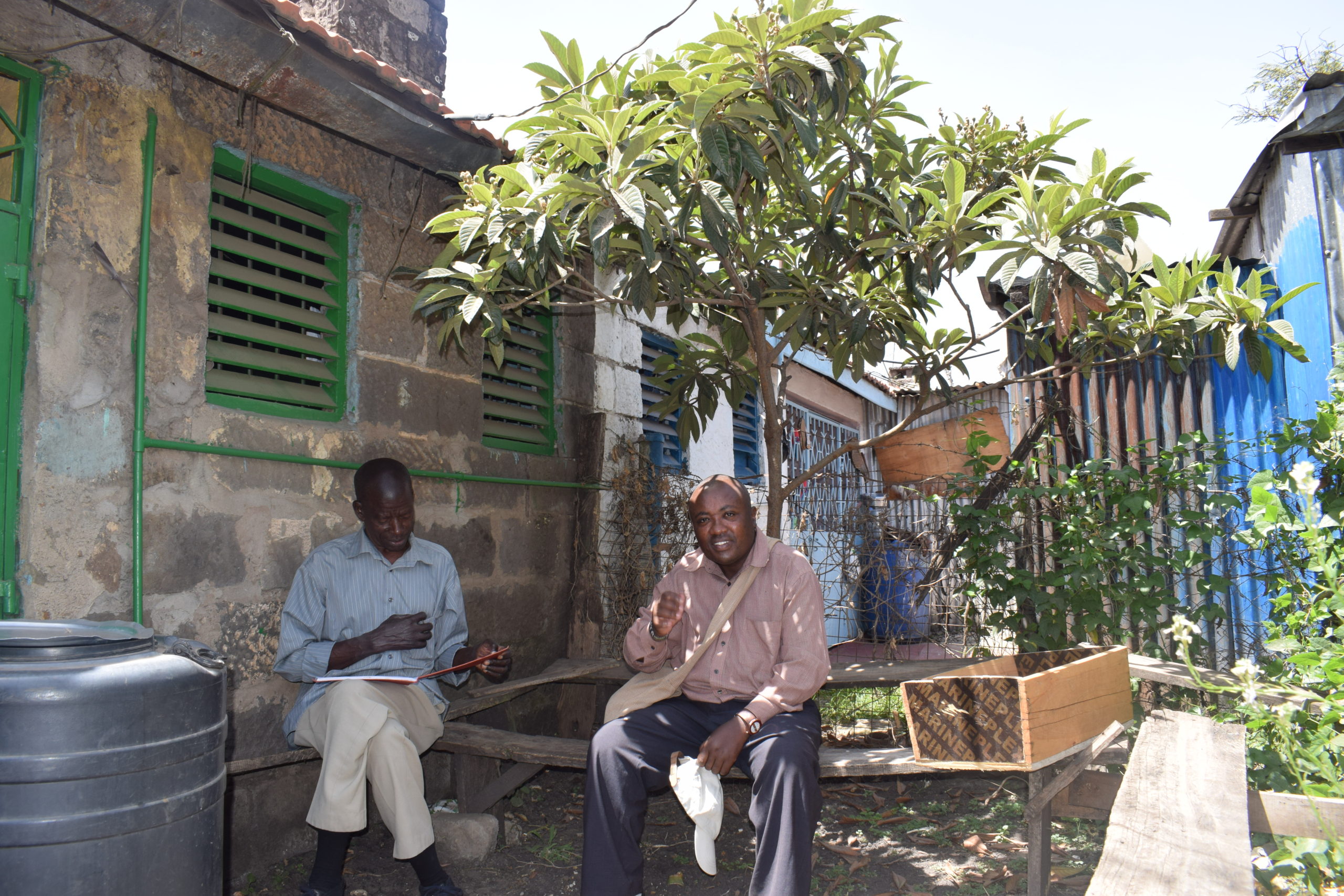
As enshrined in Article 43 1c of the Kenyan constitution every Kenya has the right to be free from hunger and to have adequate food of acceptable quality. In 2016, Route to Food started an initiative, Food Rights Programme under the Heinrich Boell Foundation. “We stand and support the realization of this right in Kenya. This is crucial because, without adequate food and acceptable standards, so many rights such as the right to health and even education, social rights are affected. We have also regularly called on the government to invest more in smallholder producers and local, agroecological food systems, which would establish a food web in Kenya that supports the production of healthy food, protects the country’s agricultural biodiversity, and enhances resilience to climate change.” Says Evelyne Ogutu, the program manager of the Heinrich Böll Stiftung.
Even as stakeholders work towards creating policies on agroecology in Kenya more needs to be done about women’s land and property rights issues. A training handbook by the Federation of Women Lawyers, Kenya (FIDA) notes that although 32 percent of households in Kenya are headed by women, that only 1 percent of land titles in Kenya are held by women alone. Although significant steps have been made to enshrine in the Kenya constitution the Matrimonial Property Act 2013, which reinforces the equal right that both spouses have when they own property together and grants some new rights to women landowners.
Human advocates note challenges in the implementation of the Act like culture and ignorance. According to Janet Anyango, legal counsel with FIDA’s Access to Justice Program, the majority of women struggle to get their property as they are not aware that they should be registered as owners. Neither are they aware of the provisions provided for them by the new law.
Dr. Oulu finally points out existing gaps in implementing agroecology in Kenya, “There is inadequate knowledge and awareness on agroecology by policymakers like elected members of parliament, technocrats (e.g. Ministry of Agriculture officials), the general public, and even universities. So agroecology is yet to be integrated into our policies, including agricultural policies. This makes it difficult for it to be promoted, funded, and upscaled at county and local levels. There is a need for targeted capacity building and integration into curriculums, something that ISFAA has started to work on.”

